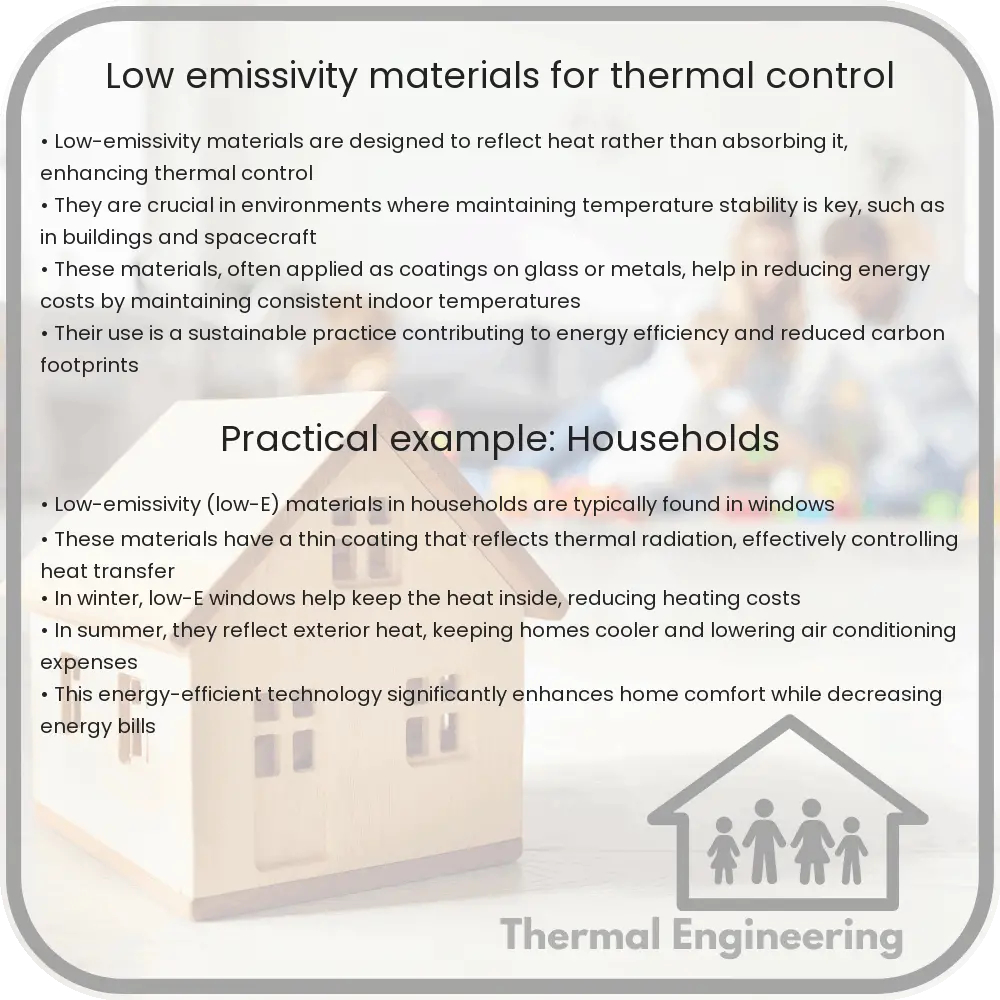Learn about low-emissivity materials, engineered to enhance thermal efficiency by reflecting infrared radiation and reducing heat transfer across multiple applications.

Understanding Low-Emissivity Materials for Thermal Control
Low-emissivity (low-E) materials are engineered to improve thermal efficiency by reflecting infrared radiation and thereby reducing heat transfer. This characteristic makes them pivotal in various engineering applications, from building construction to aerospace technology.
How Low-Emissivity Materials Work
Low-E materials function by having a surface coating that reflects and emits low levels of infrared thermal radiation. The effectiveness of these materials is generally quantified by their emissivity value, which typically ranges from 0.02 to 0.2 for low-E materials. This is significantly lower than the emissivity of ordinary materials, which can vary from 0.6 to 0.9.
The principle behind low-E technology lies in its ability to reflect heat when applied to surfaces facing the heat source and to reduce heat loss when applied on surfaces facing away from the heat source. In both scenarios, the primary goal is to maintain desirable temperatures with greater energy efficiency.
Applications of Low-Emissivity Materials
- Building Envelopes: Low-E coatings are applied on windows and glass doors to prevent the unwanted transfer of heat. During the winter, they reflect internal heat back into the building, thus conserving warmth. Conversely, in the summer, they reflect external solar radiation to keep interiors cool.
- Spacecraft: In the vacuum of space, controlling thermal environment is crucial. Low-E materials are used on spacecraft exteriors to protect against the extreme temperatures of space, reflecting solar radiation and minimizing heat loss from internal sources.
- Automotive: Low-E windows in vehicles can help reduce the need for air conditioning by reflecting infrared radiation from the sun, enhancing the comfort for passengers and improving fuel efficiency due to lower AC load.
Advantages of Low-Emissivity Materials
- Energy Efficiency: By reducing the demand on heating and cooling systems, low-E materials can lead to significant energy savings and lower utility bills.
- Comfort: Improved thermal control enhances comfort in living spaces and workplaces, making environments more habitable with stable interior temperatures.
- Environmental Impact: Use of low-E materials contributes to sustainable building practices by reducing the carbon footprint associated with excessive energy use.
Future of Low-Emissivity Materials
With the continual push towards sustainability and energy-efficient technologies, the future for low-E materials looks promising. Research is ongoing to develop new low-E coatings with higher durability and better performance under different environmental conditions. Innovations in nanotechnology and materials science could lead to the next generation of low-E materials that are even more effective and versatile.
In conclusion, low-emissivity materials play a critical role in advancing thermal control in various engineering fields. By understanding and harnessing the properties of these materials, engineers can significantly enhance the thermal efficiency of systems and structures, paving the way for more energy-efficient and sustainable practices in the future.